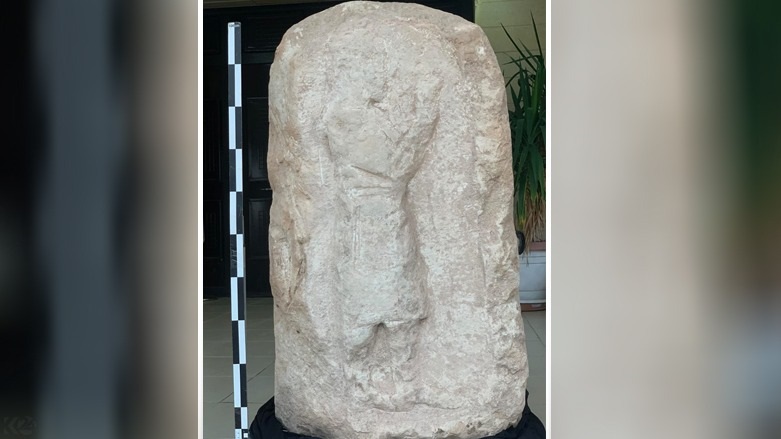Rare Zoroastrian artifact found in Kurdistan Region’s Duhok
Zoroastrianism is one of the world's oldest, continuously practiced religions and combines elements of both monotheism and polytheism.

ERBIL (Kurdistan 24) – The Kurdistan Region’s Department of Antiquities in Duhok Governorate announced the discovery of a rare and ancient artifact in the Semel district, west of the city of Duhok.
“It is a one-of-a-kind stone tablet carving, which is 109 cm high, with the picture symbolizing a king or a high priest in the Zoroastrian religion,” Hassan Ahmed Qasim, head of the Duhok Antiquities Department said in a press conference, as he explained that Zoroastrianism has a history going back one thousand years before Christ.
“Our research still continues to determine exactly what it symbolizes,” he said, “however, according to initial studies, it is most likely a Zoroastrian priest. “He further explained that this was one of many Zoroastrian artifacts found in the area since the first discovery in 2005.
The artifact was found in a joint effort with German teams from the University of Tübingen.
Qasim said that Duhok’s department of antiquities is planning to establish an archeological dig site in that area next year for research and further discoveries.
Zoroastrianism is one of the world's oldest, continuously practiced religions and combines elements of both monotheism and polytheism.
Its followers worship a benevolent deity called Ahura Mazda, and the religion is known for its triple motto of Good Thoughts, Good Words, and Good Deeds.
The prophet Zoroaster, also known as Zarathustra, is said to have introduced the religion approximately 4,000 years ago as part of a belief system based on concepts of good, evil, and retribution.
Zoroastrianism was the state religion of Iran until the seventh century arrival of Islam. Some 200,000 people still practice the faith. They live primarily in Iran, India, the Kurdistan Region, and Pakistan, as well as in smaller communities in some Western nations.
In 2015, Zoroastrianism gained official recognition as a protected faith in the Kurdistan Region, and the group has a representative in the Kurdistan Regional Government's (KRG) Ministry of Endowment and Religious Affairs.
Editing by Laurie Mylroie